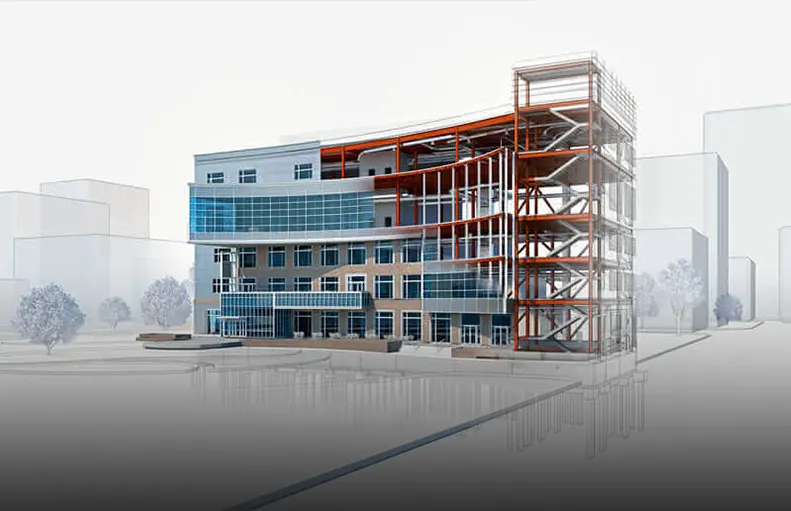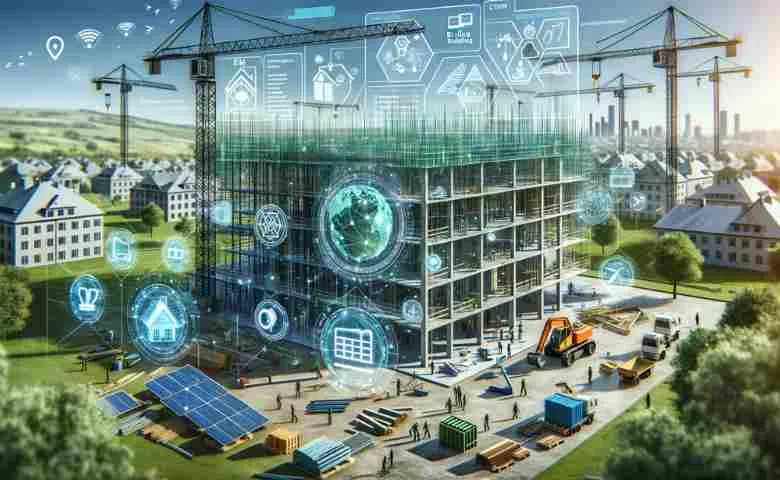- Join Dubai’s Leading Technical Training Institute Today!
- 50 6914688
- info@solvetechtraining.com
Streamlining Construction Projects with Infrastructure BIM Services

Innovations in HVAC Systems: A Deep Dive into Modern MEP Solutions in Dubai
August 10, 2024
Best Garage Management software in Dubai
August 25, 2024
Streamlining Construction Projects with Infrastructure BIM Services
In today’s fast-paced construction industry, efficiency and precision are more crucial than ever. With projects becoming increasingly complex and time-sensitive, the need for innovative solutions is paramount. Enter Building Information Modeling (BIM) services—a game-changer for infrastructure projects. BIM isn’t just a buzzword; it's transforming how construction projects are planned, executed, and managed. In this blog, we’ll explore how Infrastructure BIM services streamline construction projects and why they are indispensable for modern construction.
What is Infrastructure BIM?
Building Information Modeling (BIM) is a digital representation of the physical and functional characteristics of a facility. Infrastructure BIM, specifically, refers to the application of BIM principles to infrastructure projects such as roads, bridges, tunnels, and utilities. Unlike traditional 2D drawings, BIM creates a 3D model that integrates data from multiple disciplines, allowing for better visualization, coordination, and decision-making throughout the project lifecycle.

The Role of Infrastructure BIM in Construction
1. Enhanced Collaboration and Communication
One of the most significant advantages of Infrastructure BIM is its ability to foster collaboration among all stakeholders. From architects and engineers to contractors and facility managers, everyone can work from a shared model. This centralized platform reduces misunderstandings and ensures that everyone is on the same page, minimizing errors and rework. The visual nature of BIM also makes it easier to communicate complex ideas, improving stakeholder engagement and decision-making.
2. Improved Design Accuracy and Quality
BIM enables precise design and documentation, reducing the likelihood of errors that often lead to costly delays and revisions. The 3D models allow for detailed analysis and simulation of various scenarios, helping to identify potential issues before construction begins. This proactive approach ensures higher quality outcomes and reduces the risk of costly modifications during the construction phase.
3. Efficient Project Management
Infrastructure BIM provides an integrated environment where project managers can track progress, manage resources, and control costs effectively. The ability to visualize the project timeline through 4D BIM (which includes the dimension of time) allows for better scheduling and coordination of tasks. This foresight helps in anticipating and mitigating potential delays, ensuring that the project stays on track and within budget.
4. Sustainability and Lifecycle Management
Sustainability is becoming a key focus in construction, and BIM plays a crucial role in achieving green building goals. BIM allows for the simulation of energy performance, helping to design more efficient and sustainable infrastructure. Additionally, BIM’s detailed data management capabilities support the entire lifecycle of the project, from design and construction to operation and maintenance. This long-term view is essential for creating resilient infrastructure that stands the test of time.
5. Cost Optimization
One of the most tangible benefits of Infrastructure BIM is cost savings. By improving design accuracy, reducing errors, and enhancing collaboration, BIM minimizes the need for costly rework and change orders. Additionally, the ability to simulate various construction scenarios allows for more informed decisions that can optimize resource allocation and reduce waste. These efficiencies translate directly into lower project costs and higher returns on investment.
Real-World Applications of Infrastructure BIM
The adoption of Infrastructure BIM is growing rapidly across the globe, with numerous successful projects demonstrating its value. For example:
Highway Construction: BIM has been instrumental in designing and constructing complex highway systems, enabling better coordination between various engineering disciplines and improving the overall quality of the infrastructure.
Urban Planning: Cities are leveraging BIM for the development of smart infrastructure, ensuring that new projects are integrated seamlessly with existing systems and are adaptable to future needs.
Utilities and Energy Projects: BIM is being used to optimize the design and maintenance of utility networks, reducing downtime and improving service reliability.

The Future of Infrastructure BIM
As technology continues to evolve, so too will the capabilities of Infrastructure BIM. The integration of Artificial Intelligence (AI) and Machine Learning (ML) with BIM is on the horizon, promising even greater efficiencies and smarter decision-making. Moreover, as more stakeholders recognize the value of BIM, its adoption will become more widespread, leading to industry-wide improvements in the quality and efficiency of construction projects.

Building Information Modeling Training in Dubai
In a world where time is money, and precision is paramount, Infrastructure BIM services offer a powerful tool for streamlining construction projects. From enhancing collaboration and communication to improving design accuracy and sustainability, BIM is revolutionizing the way infrastructure is built and managed. For construction professionals looking to stay ahead of the curve, embracing Infrastructure BIM is not just an option—it’s a necessity.
By leveraging the full potential of BIM, construction projects can be delivered on time, within budget, and to the highest possible standards. As the industry continues to evolve, those who adopt BIM today will be well-positioned to lead the way into the future of construction.


